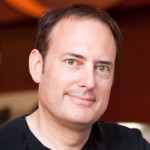 Let’s turn the clocks back to about a month ago where OnLive CEO Steve Perlman revealed vague details of a new wireless technology that he believed was going to change everything. The claims being made were fantastic, in that they’ve not only broken a key law of wireless technology that dictates the maximum amount of data that can be transferred wirelessly, but they’ve exceeded it, many times over. Also, Perlman claimed that this was all possible with equipment that is less complex than current wireless gear, with both higher range and significantly lower latency.
Let’s turn the clocks back to about a month ago where OnLive CEO Steve Perlman revealed vague details of a new wireless technology that he believed was going to change everything. The claims being made were fantastic, in that they’ve not only broken a key law of wireless technology that dictates the maximum amount of data that can be transferred wirelessly, but they’ve exceeded it, many times over. Also, Perlman claimed that this was all possible with equipment that is less complex than current wireless gear, with both higher range and significantly lower latency.
Obviously the implications this could have on iOS gaming could be massive, as even the latency reduction alone could potentially completely change the face of mobile multiplayer gaming as developers are no longer forced to utilize net code to deal with the comparatively high latency of existing wireless networks. Honestly, it all sounded a little too good to be true, but remember: We all said the same thing about OnLive.
A white paper was released today which reveals some of the details of how this all works. It starts off very easy to follow, and includes some great explanations of why current wireless technology has the limitations it has. Specifically, detailing why you can’t watch YouTube at a sports game and why your wireless network is so terrible in your New York City apartment building.

Illustration showing WiFi networks overlapping, causing a performance drain for all connected devices.
Following the cursory background into the how’s and why’s of current technology, the white paper dives into what makes DIDO, or “distributed input distributed output" different. It’s more of an overview, as apparently the complete answer for how it all works involves “very long, involving immensely complex mathematics, very carefully designed software and hardware, and new data communications and modulation techniques."
Like most technological problems these days, the current “problem" of wireless technology is solved by implementing the cloud. The magic of the DIDO network all takes place in the DIDO datacenter where previously mentioned complex mathematics are all computed to tread the whole DIDO network as one entity, utilizing a (potentially) vast array of DIDO access points to precisely send very specific waveforms to certain access points to result in all users being to take advantage of the full wireless spectrum.

Illustration of DIDO’s ability to allow every device utilize 100% of the available data rate.
If you’re at all interested, I highly encourage checking out the white paper where everything is explained so succinctly that there’s not much use in me paraphrasing it here. One thing that is worth mentioning is that they’ve stressed that this technology has been developed specifically to be a mass-market product that was built from the ground up to be both practical and inexpensive to roll out, as well as capable of scaling to any size.
As the white paper puts it, “We believe DIDO wireless will completely transform the world." I’d love to see that happen.